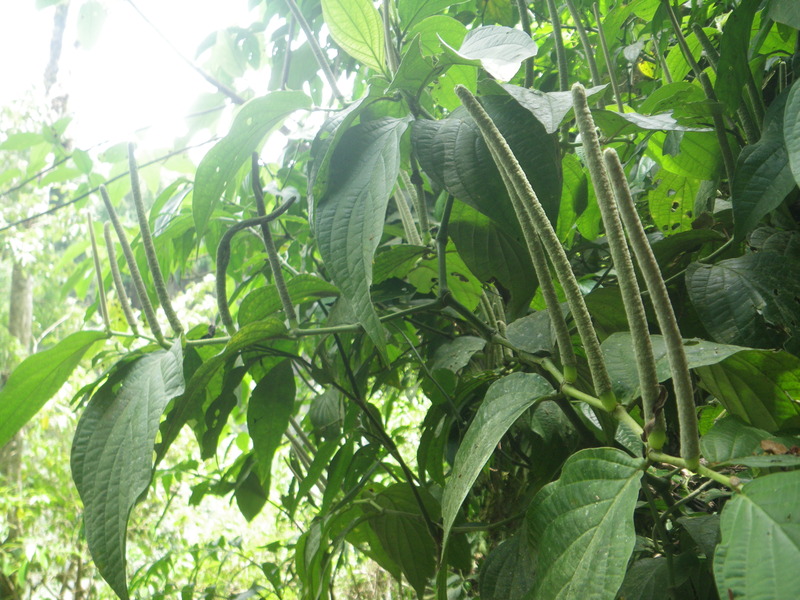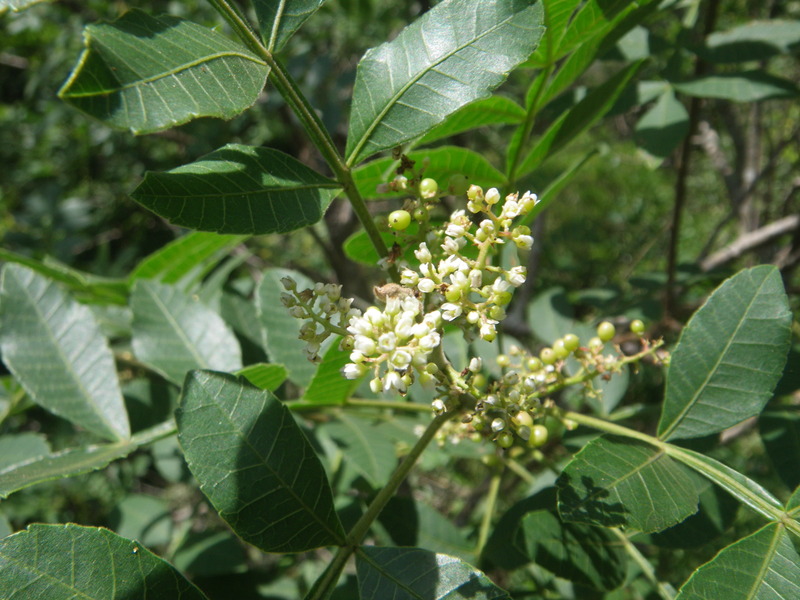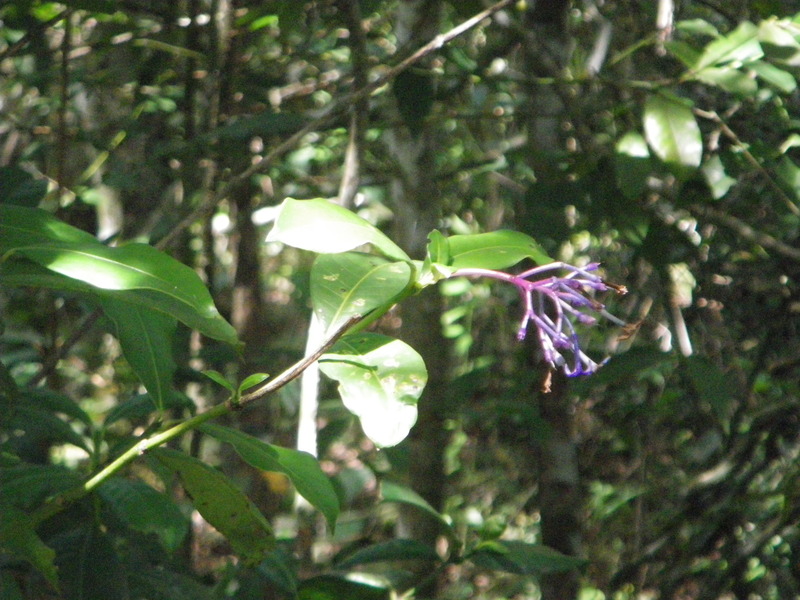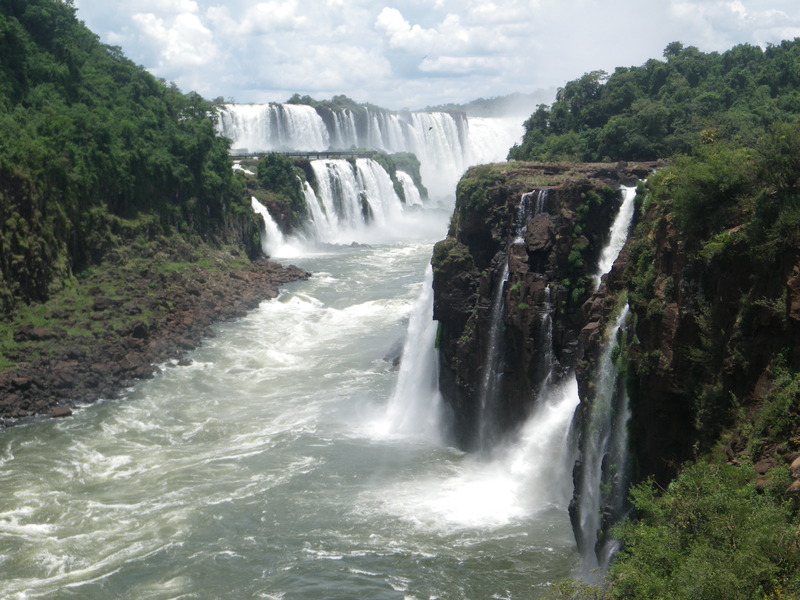
Iguazu falls are shared by Argentina and Brazil, near the border with Paraguay. The falls are wider and taller than Niagara falls, set in a beautiful rainforest that both countries have protected with National Parks.
The centerpiece of the falls is the Devil's throat (Garganta del Diablo), which forms the border between Brazil and Argentina.

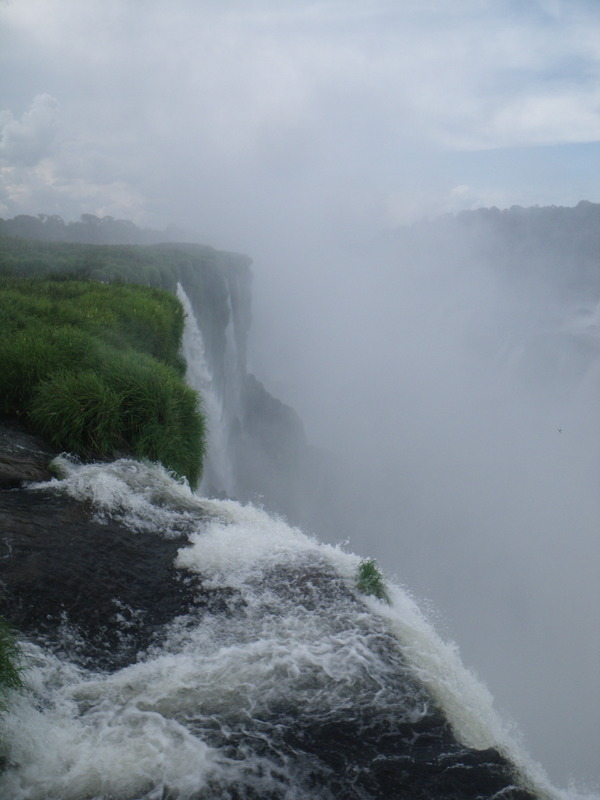



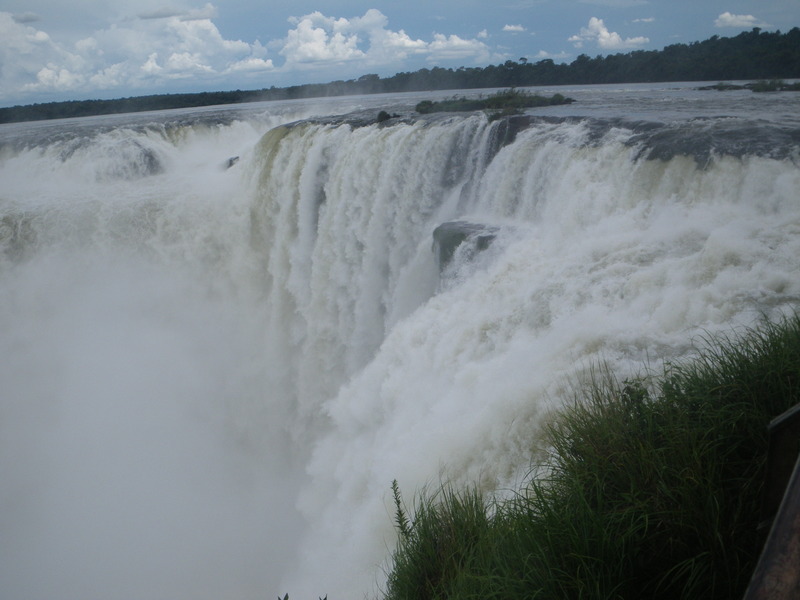
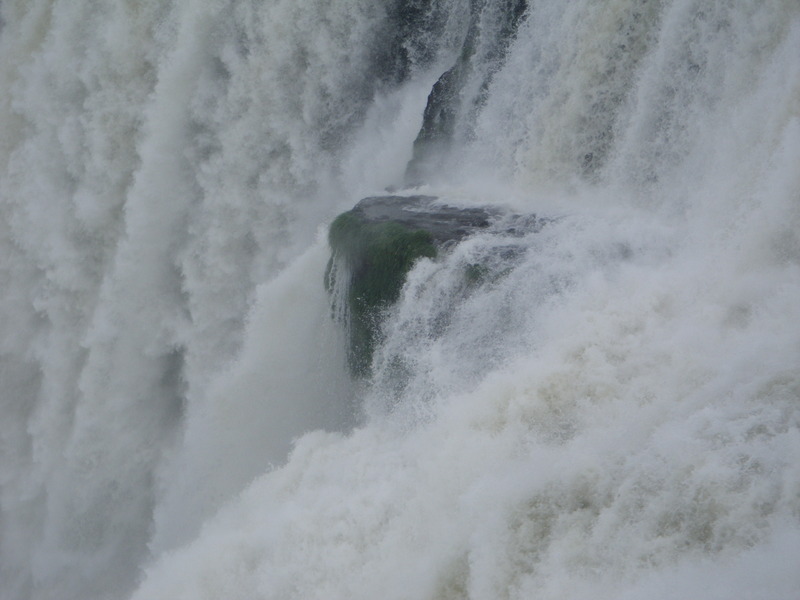

It is hard to do justice to a waterfall through pictures, so I also shot a tiny video clip and a larger video clip.
The waterfall extends considerably past the Garganta del Diablo, especially on the Argentine side, with many falls over a distance of multiple km.
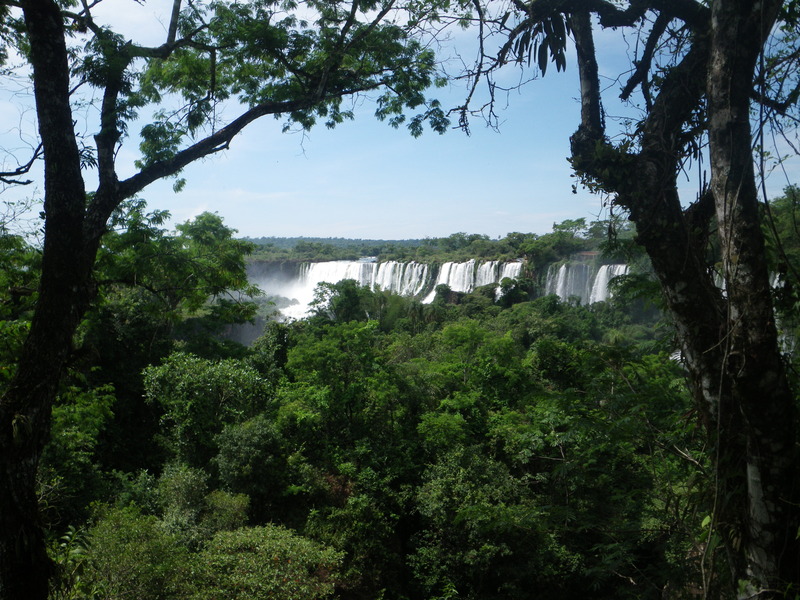
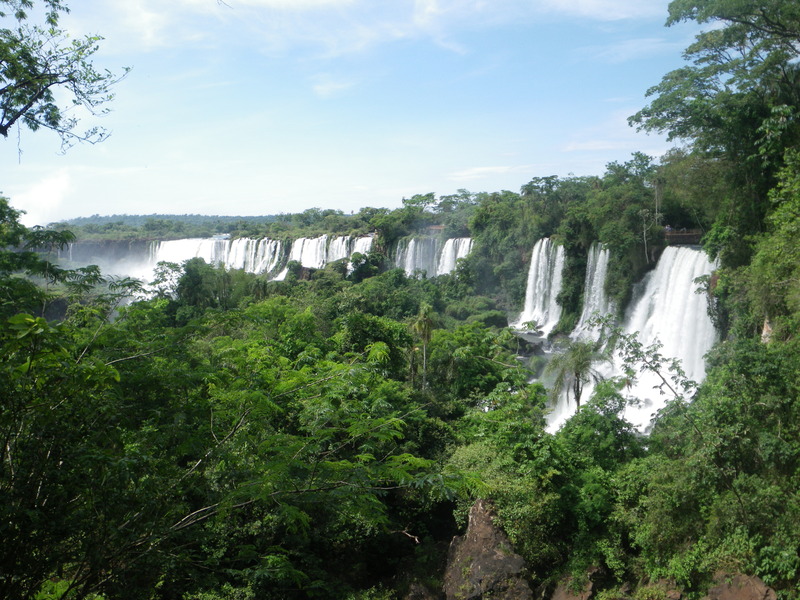
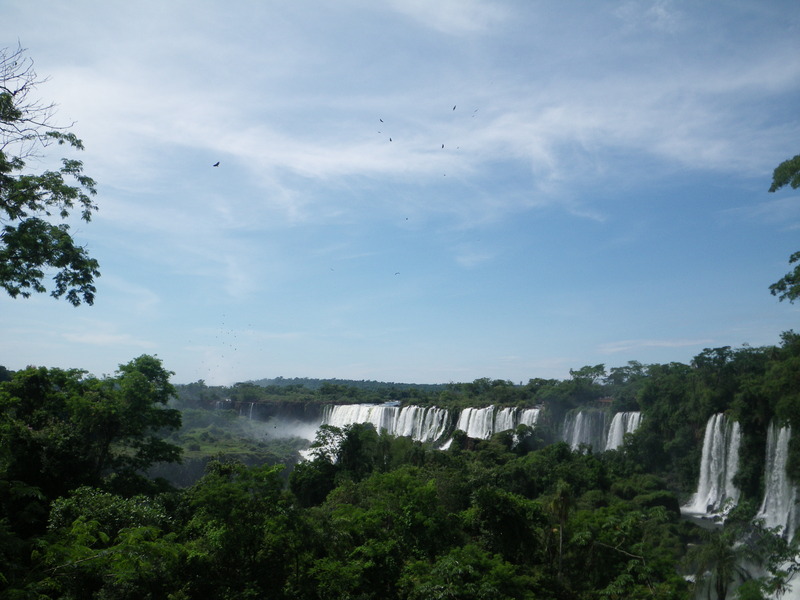
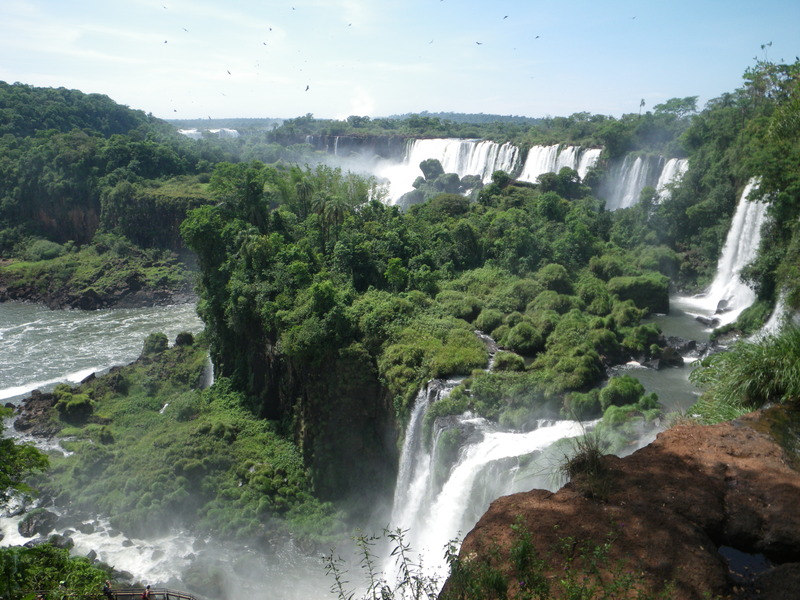
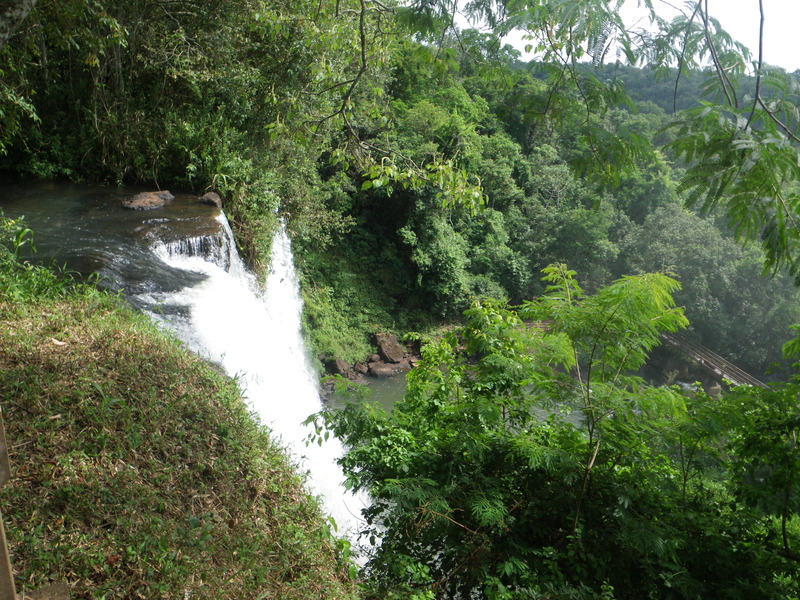
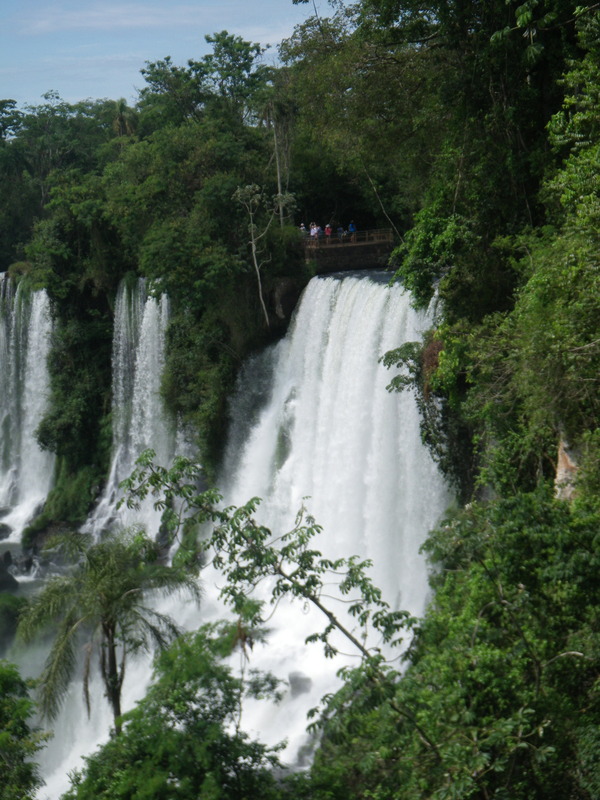

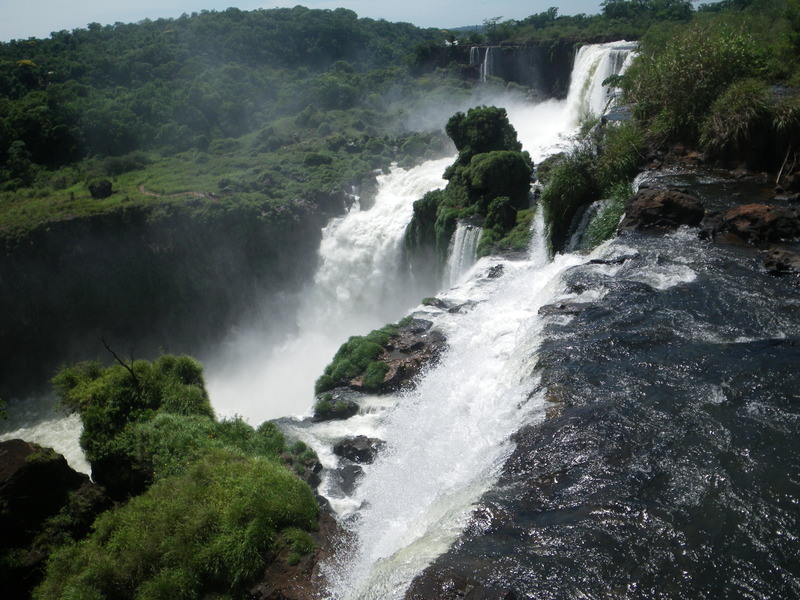
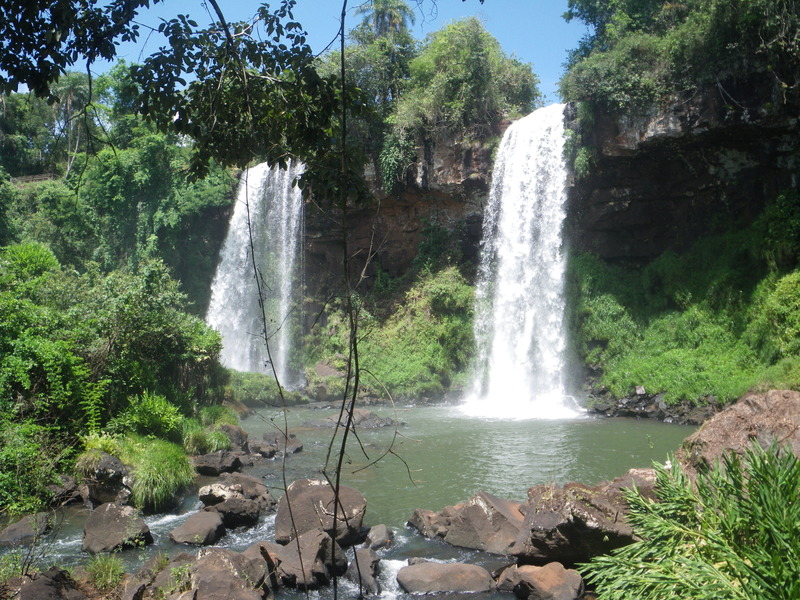


Because there are many falls, there are many precipitous islands. The largest one I was able to visit is the Isla San Martin, the island with a small beach in the next picture.
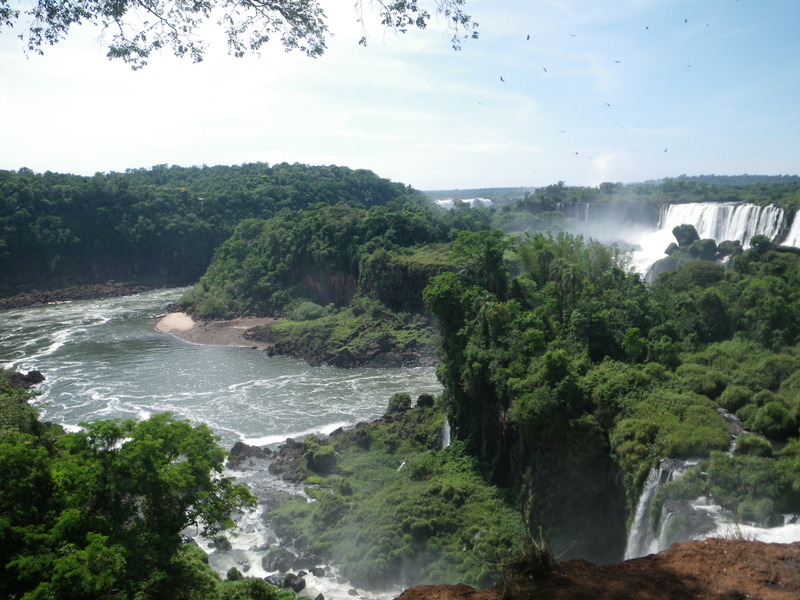
There is no bridge to the Isla San Martin, but there is a ferry.
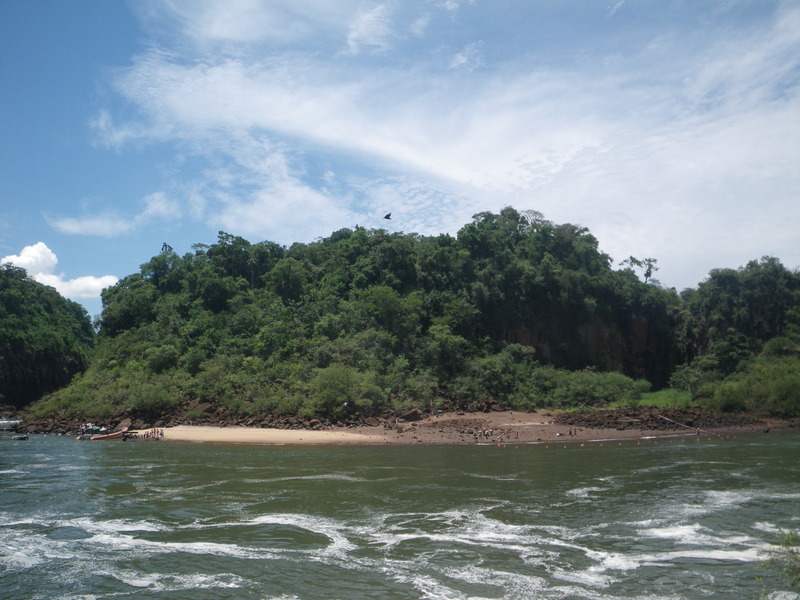
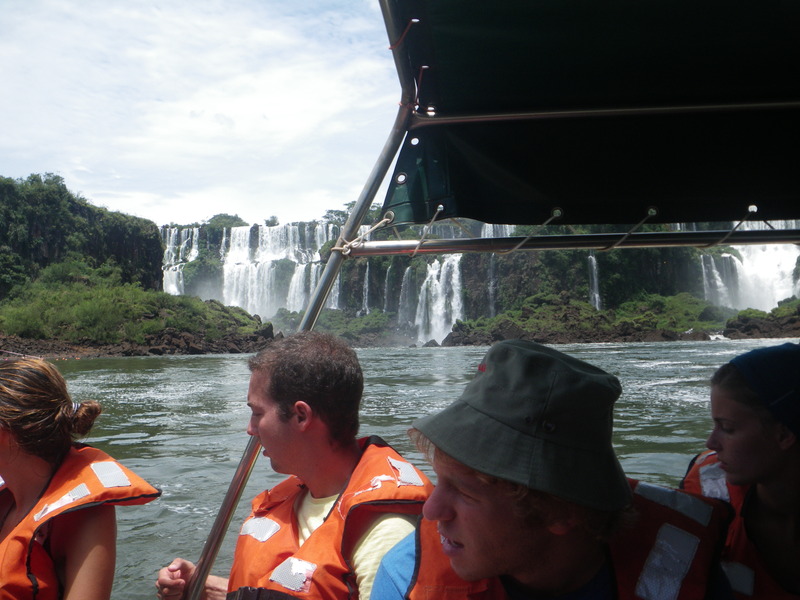
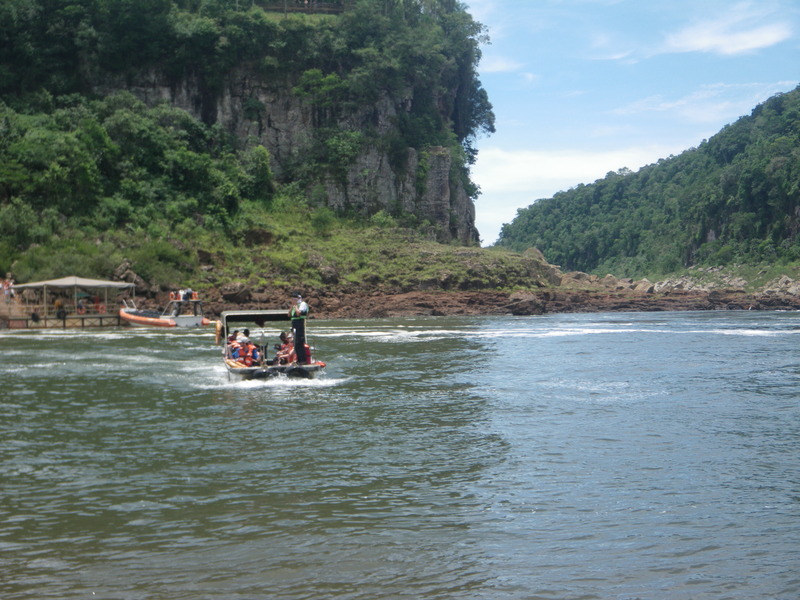
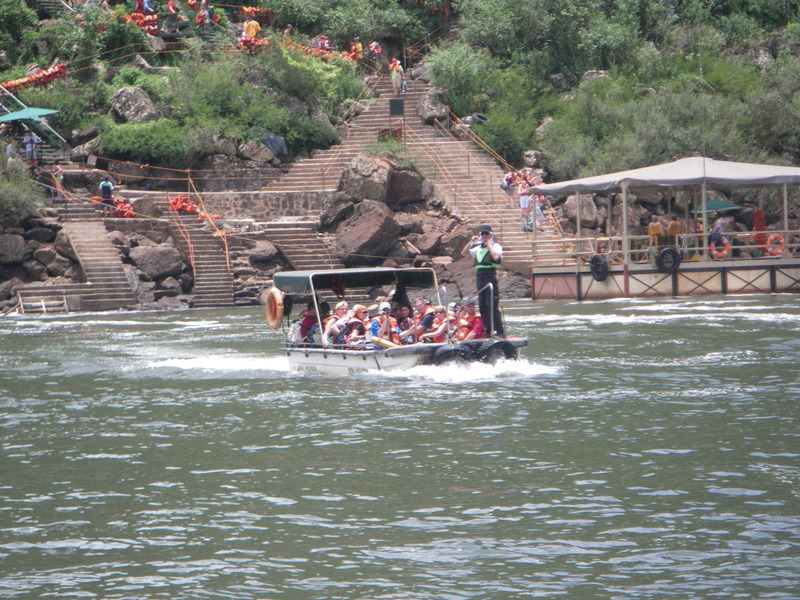
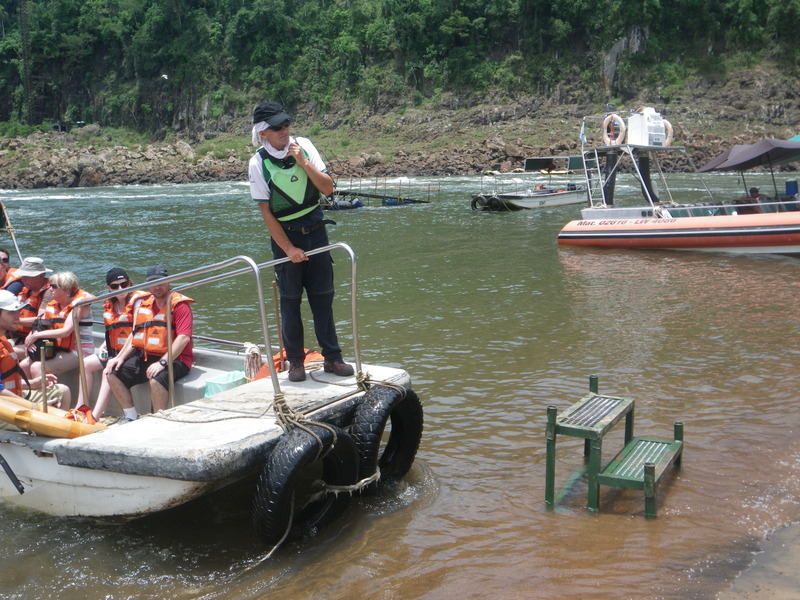
On the island there is a small swimming area. The safe area for swimming seems to change frequently, I guess depending on the river flow. I saw lifeguards moving the boundaries multiple times.
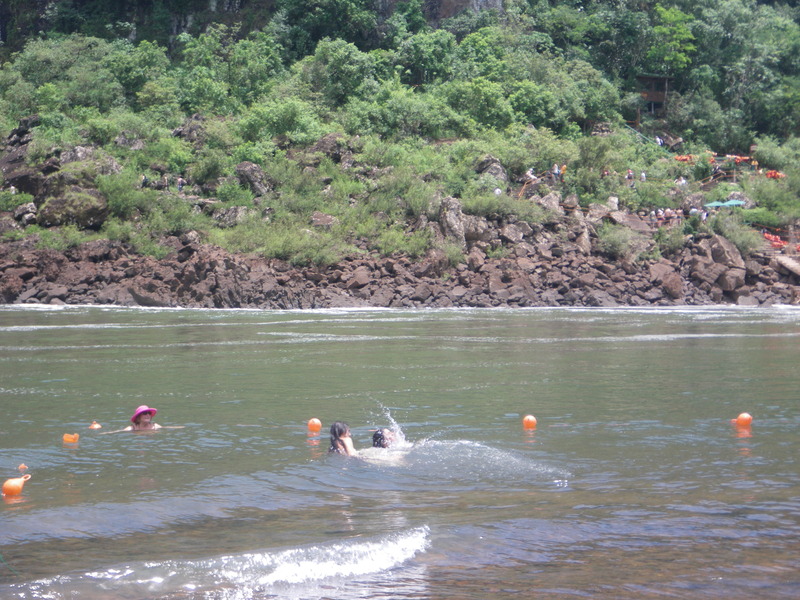

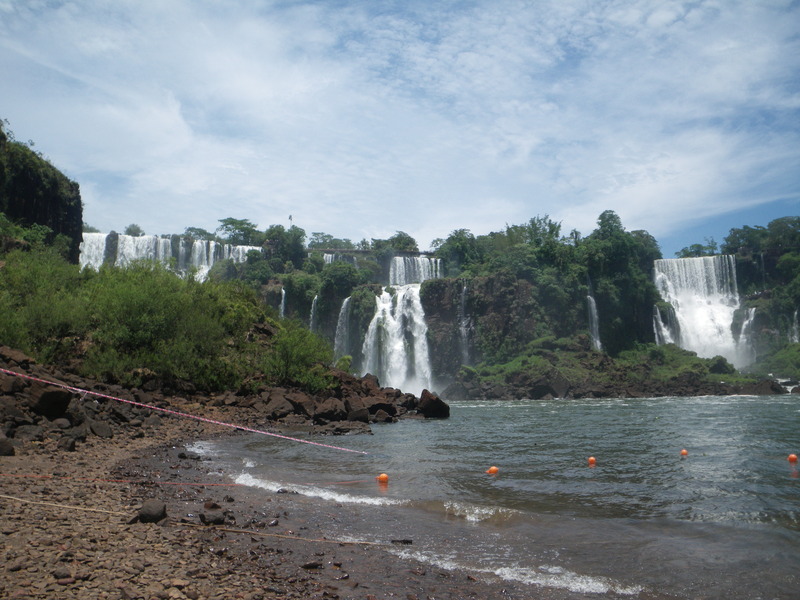
San Martin island is very steep, and without the helpful steps, would be hard to climb.

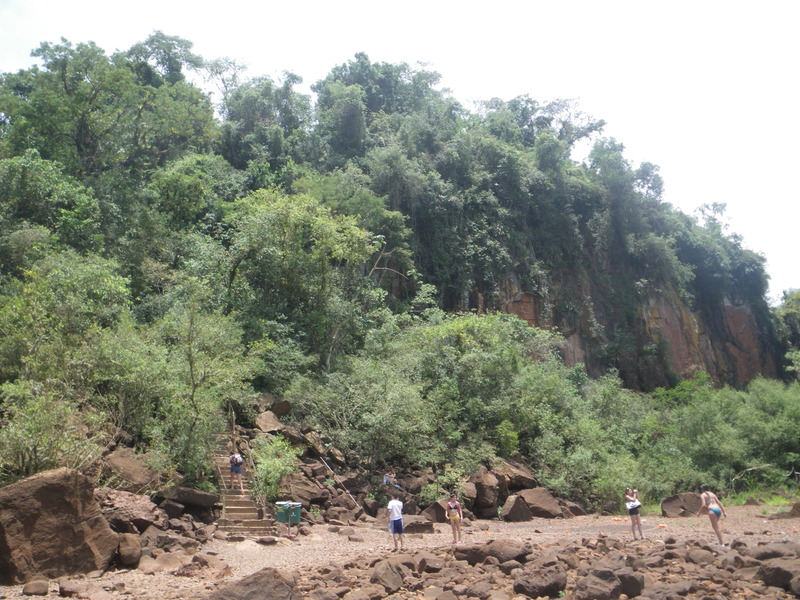
The top of the island gives a very nice view of much of the falls.

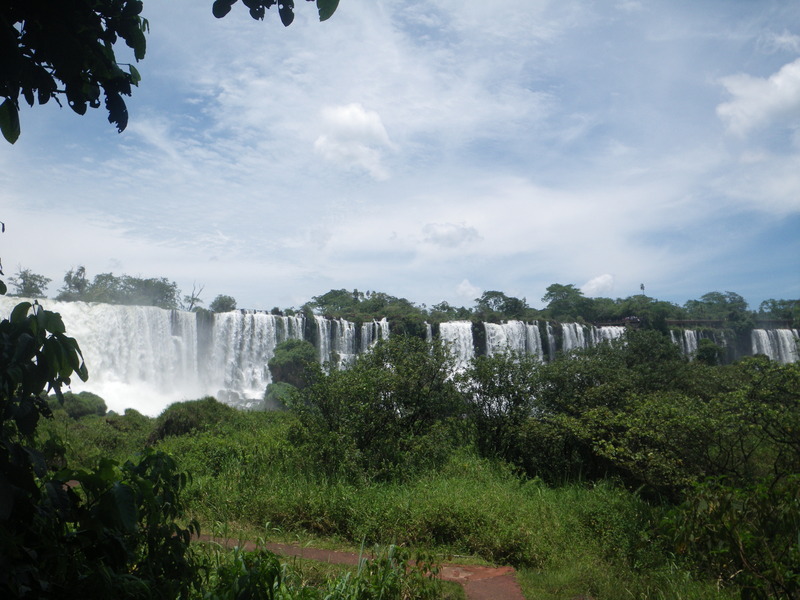
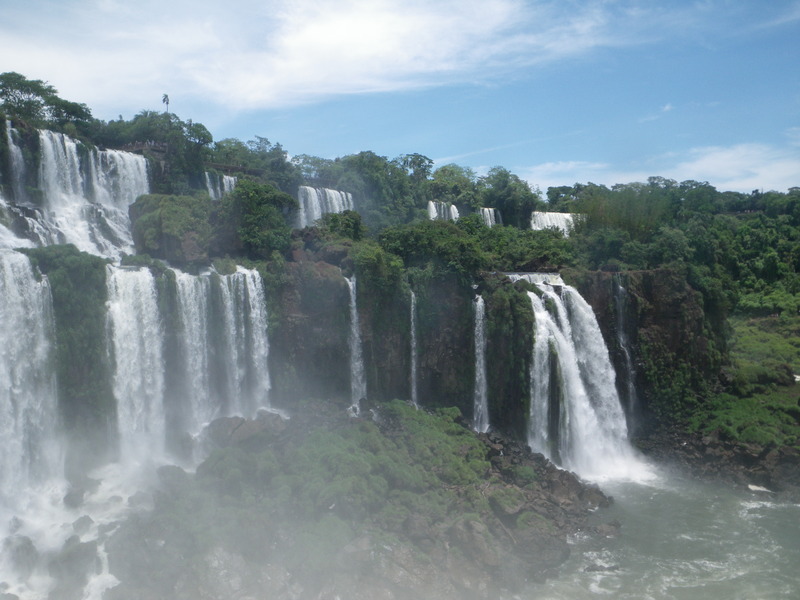
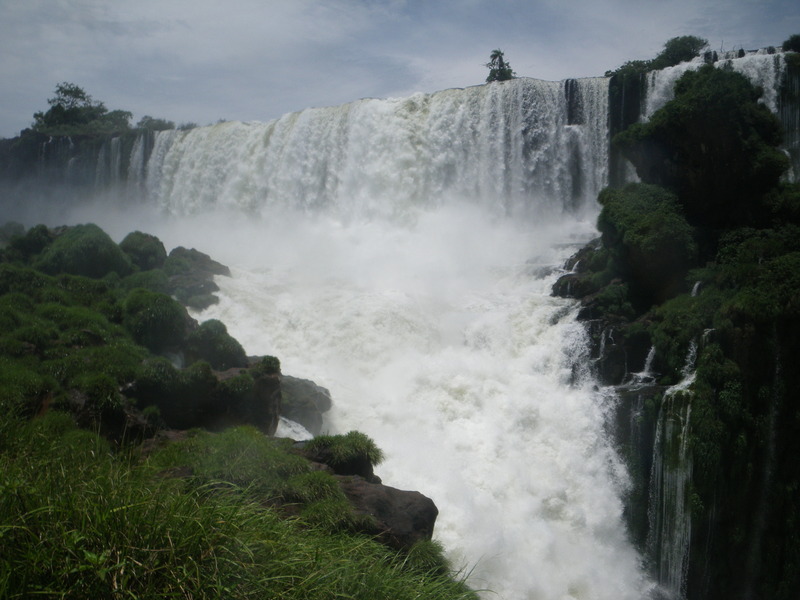
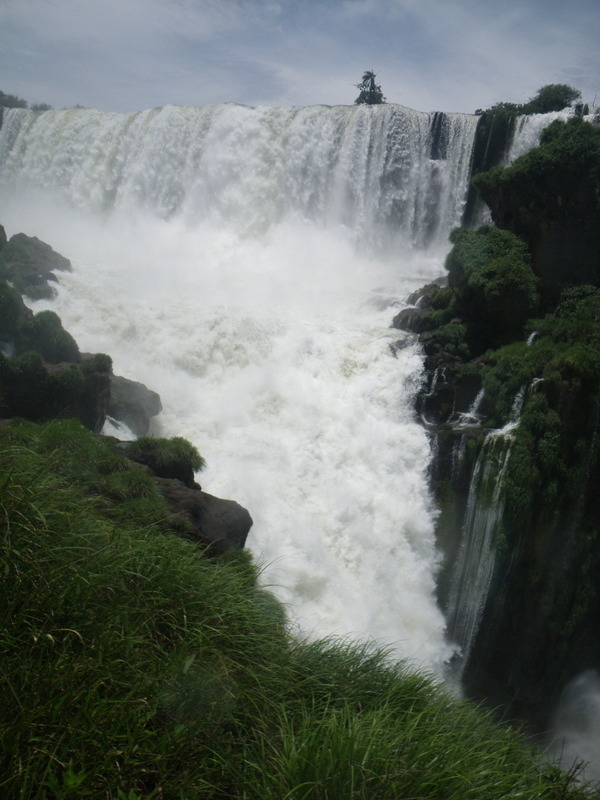


The island is also a good viewpoint to see the Iguazu river flowing downstream.

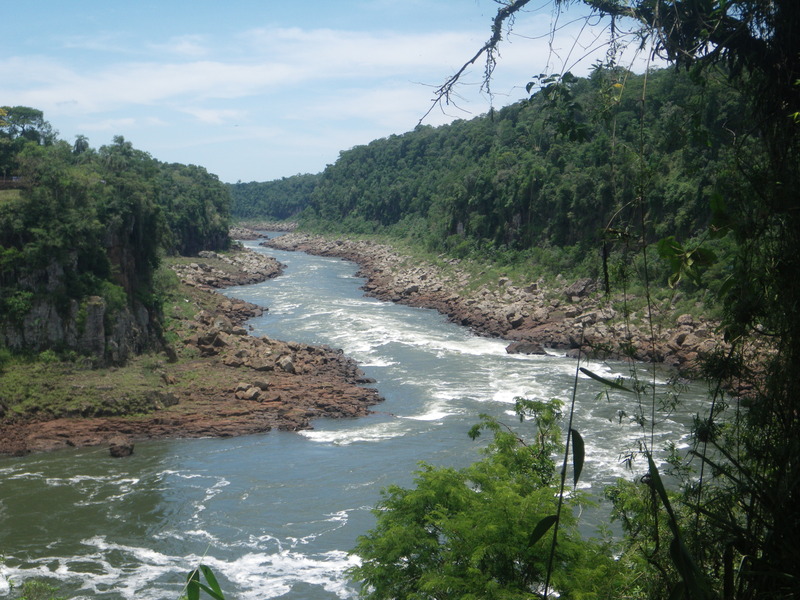
Perhaps because of its relative inaccessibility, I saw some nice birds on Isla San Martin.
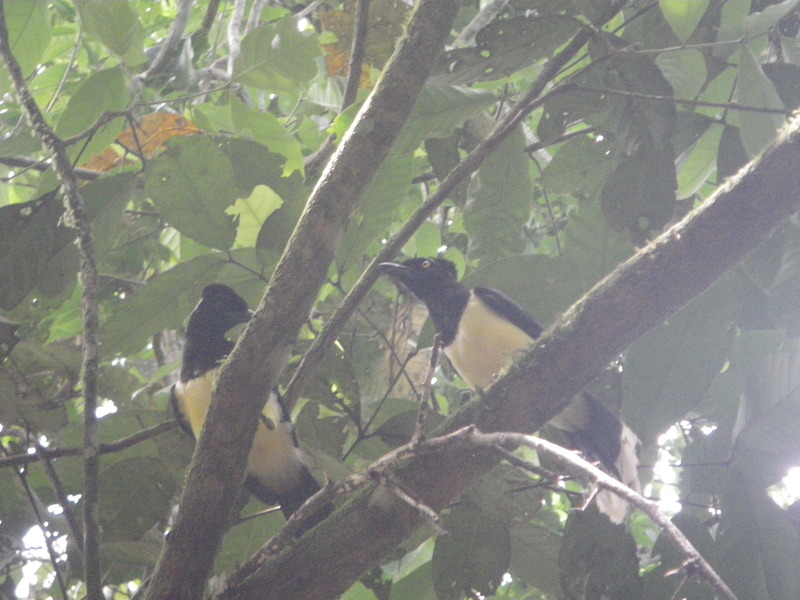
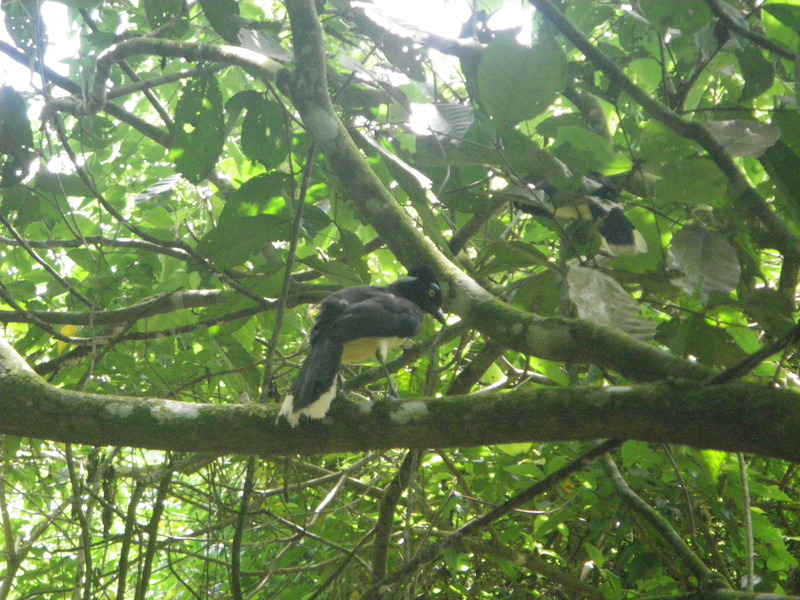
I also saw the same birds in another area.

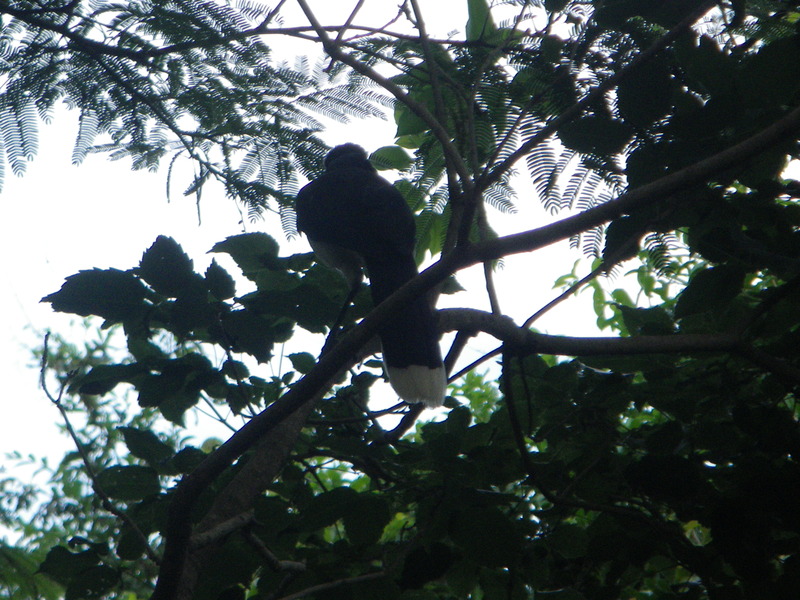
Big raptors really liked the Isla San Martin. These may be harpy eagles.

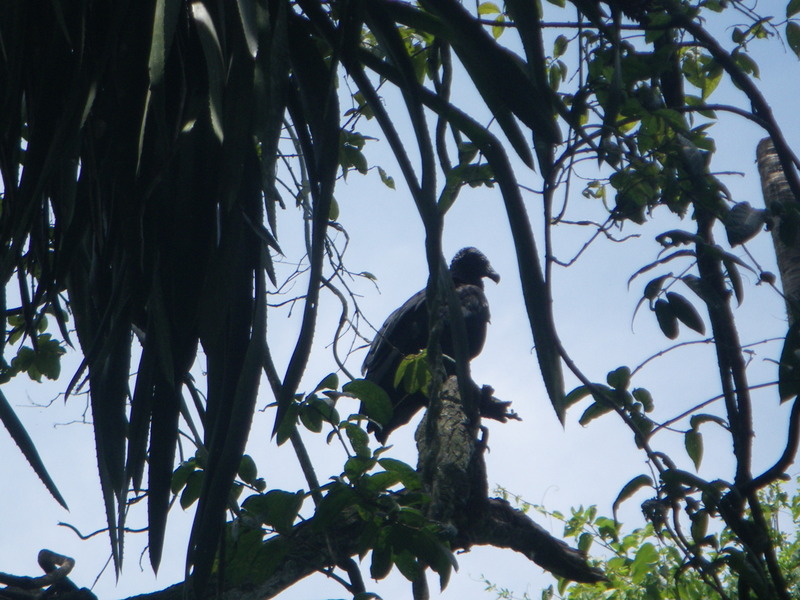

On the same island I saw a large iguana, perhaps 70cm long.

One of the many waterfalls, called Salto Bossetti, is accessible near the top and the middle. It made a nice rainbow while I was there.
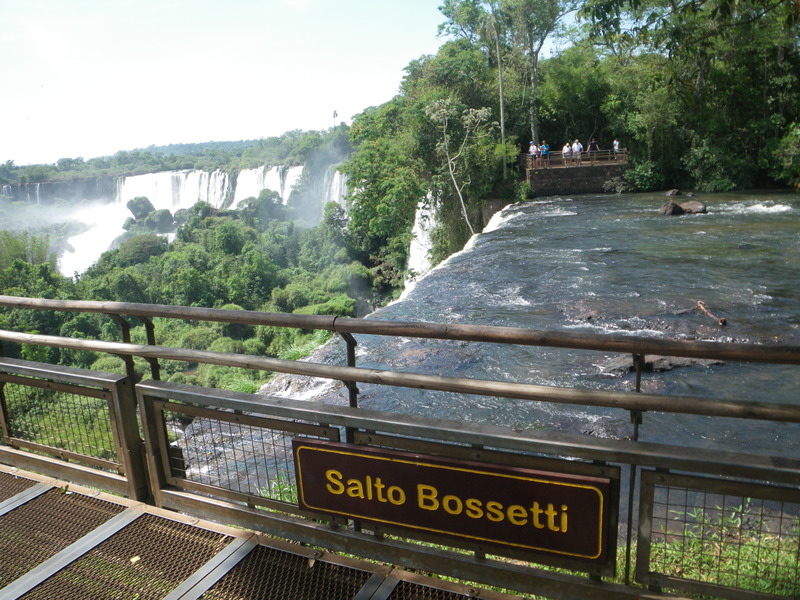

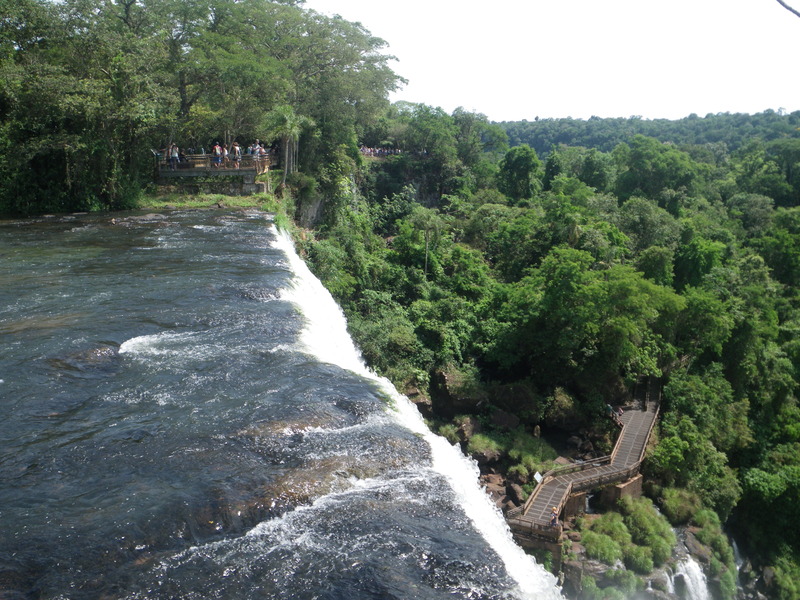
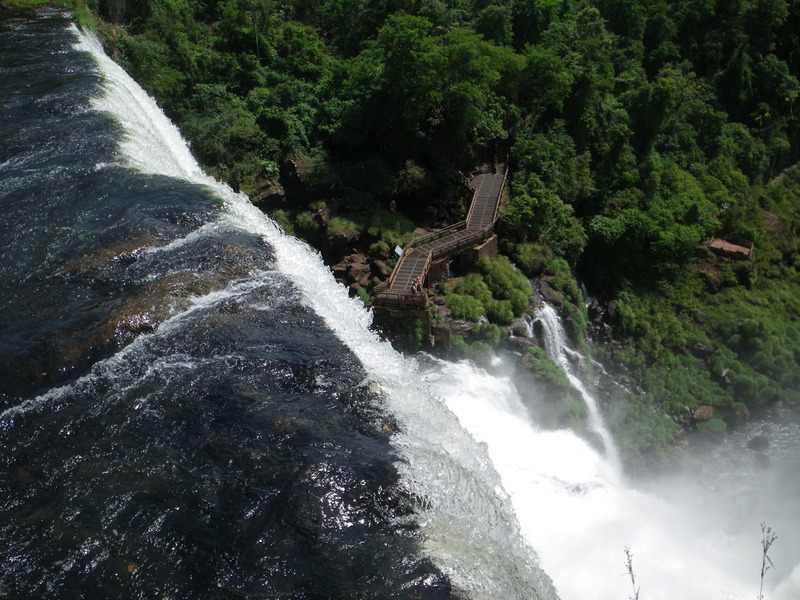
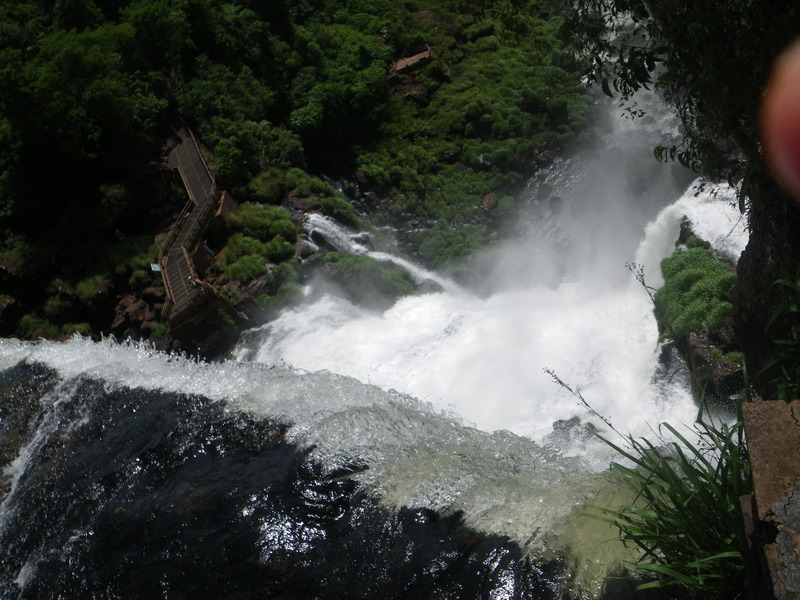
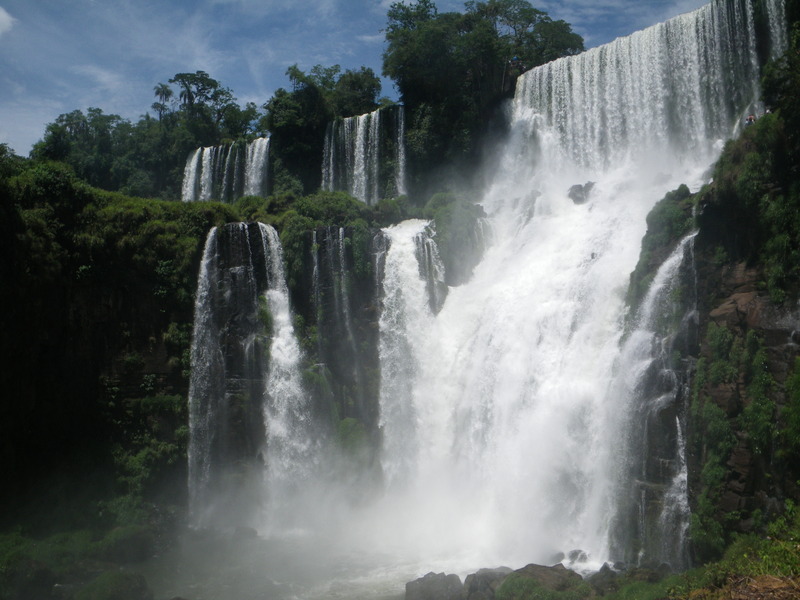


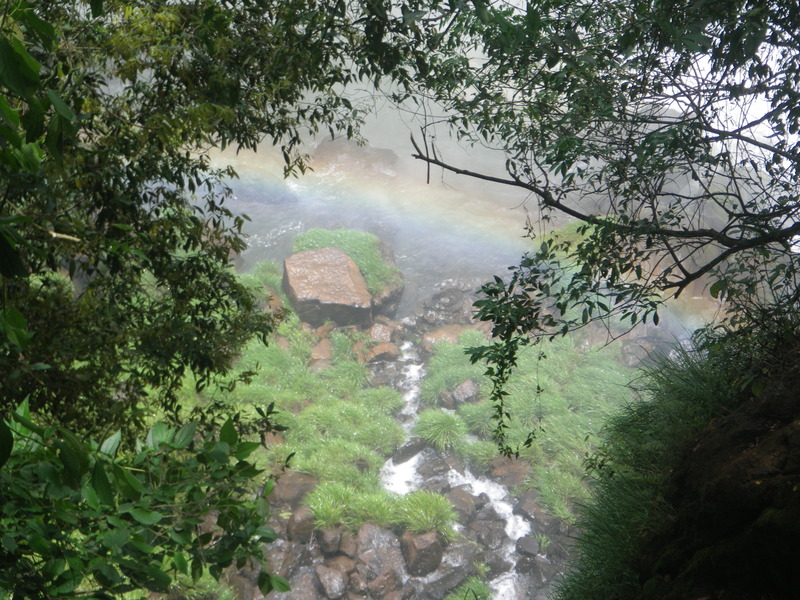



As well as the beautiful waterfalls, the Iguazu national parks include a good part of the remaining Paranaense rainforest, a beautiful subtropical forest with a wide variety of plants and animals. Some trees, such as copaifera and curupay (Anadenanthera colubrina), only grow near the falls, nurtured by the falls' mist and moderate microclimate. Others would grow elsewhere, but outside the national parks have been extensively cleared.
I will not include pictures of trees, but to give an idea of the variety, the signs I saw showed trees in the families Tiliaceae, Bignonaceae, Arecaceae, Meliaceae, Sapotaceae, Mirtaceae, Borraginaceae, Sapindaceae, Moraceae, Rubiaceae, Caricaceae, and Proteaceae. I also saw some Bromeliads. And by far the most labeled trees were in the family Fabaceae, the same family as peanuts, beans, and acacias.
Beyond the labeled trees, some trees were flowering and simply looked beautiful.
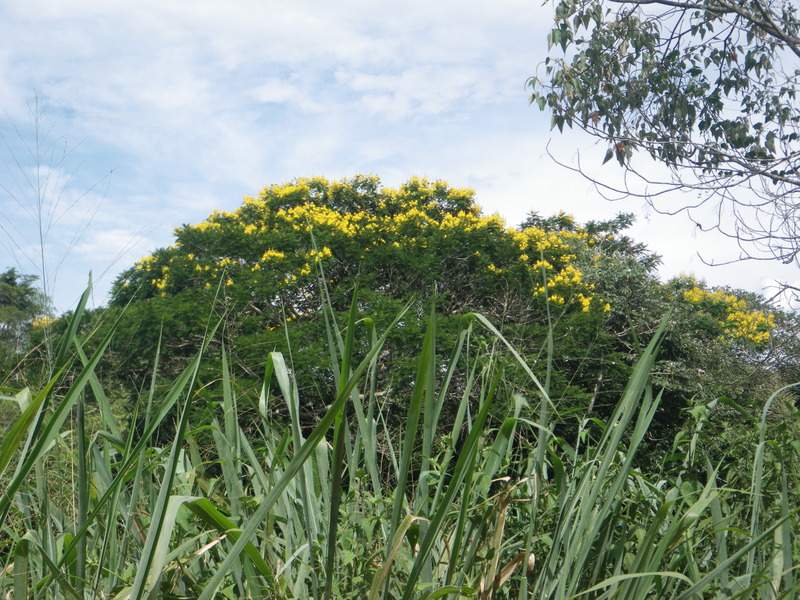

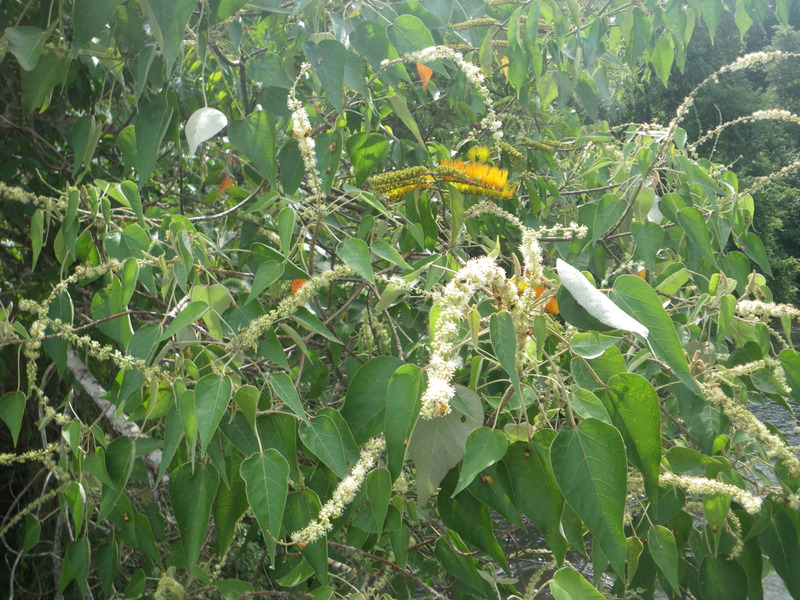
There were also invasive plants. This picture shows a Hovenia dulcis tree, originally from Asia, from which the bark was removed in a circle around the base, a procedure called girdling that often kills the tree.
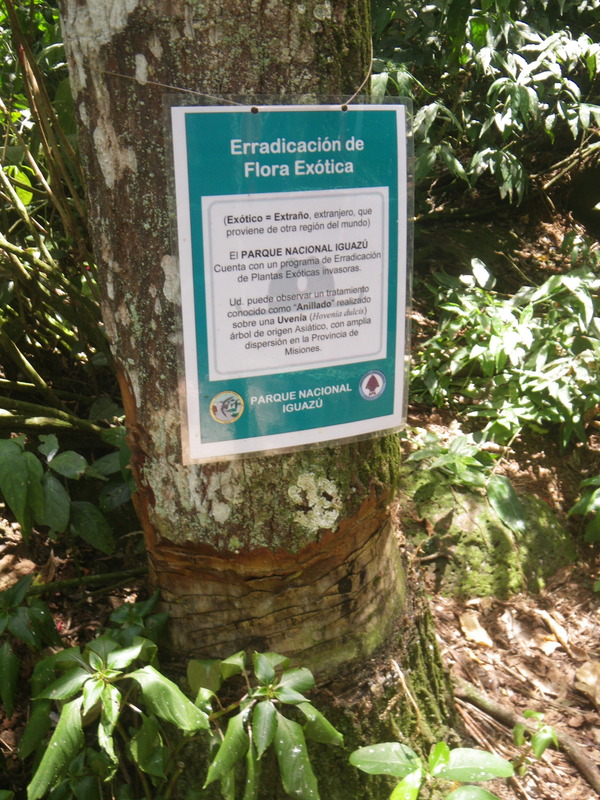
I found Iguazu national park quite well done. They have a little railroad to get people around, lots of walkways, and a few nice touches. For example, the sign in this pictures asks "Do you know who is responsible for the conservation of your national park? Open, the answer is inside!!!"
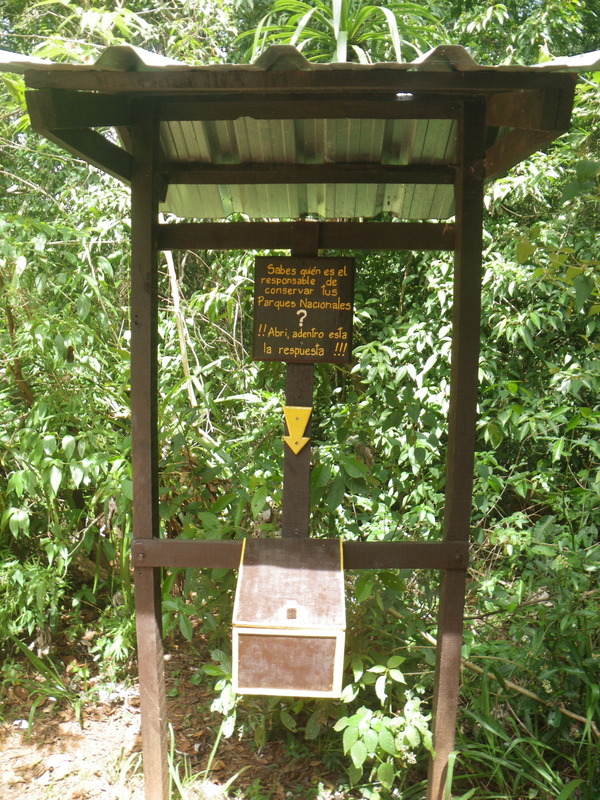
Inside the box is a mirror.
I saw four kinds of native mammals in the park: coati, which is related to North American raccoons, capuchin monkeys, one aguti, and some guinea pigs. I did not get good pictures of the Aguti and the guinea pigs.
All of these animals were in areas filled with people. The Coati were begging and stealing food, and have been known to bite and scratch. But as long as you do not have food, they are quite charming, especially when they have their young.
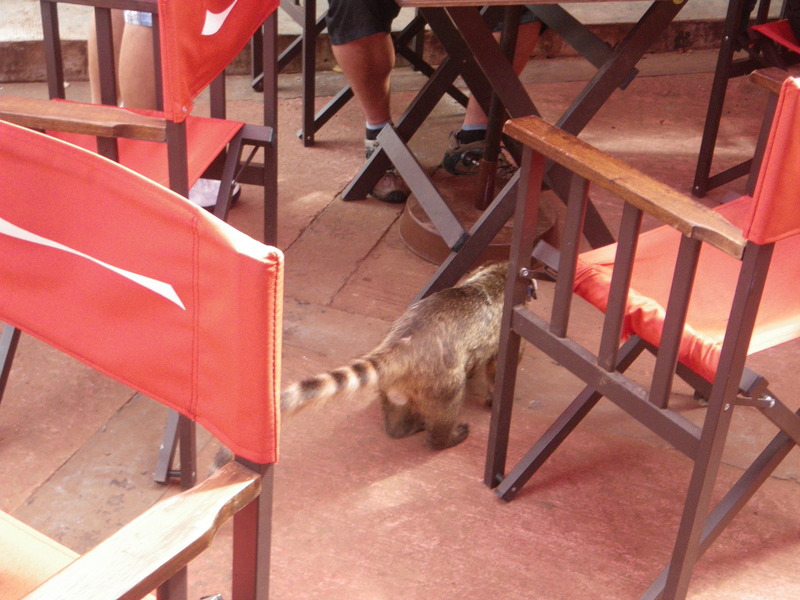

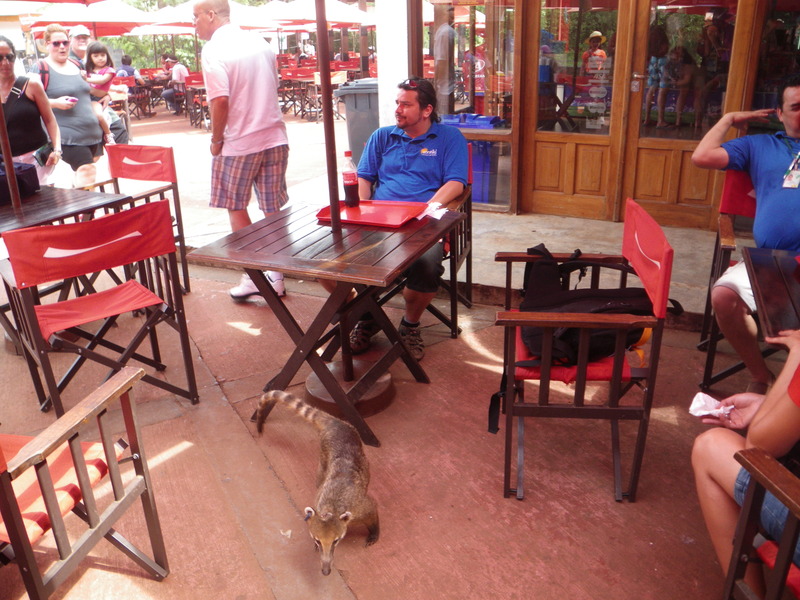
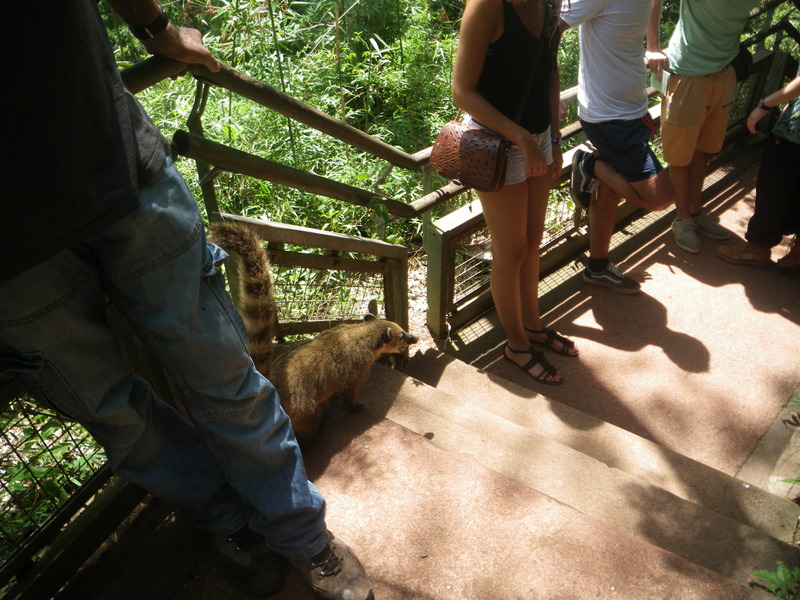

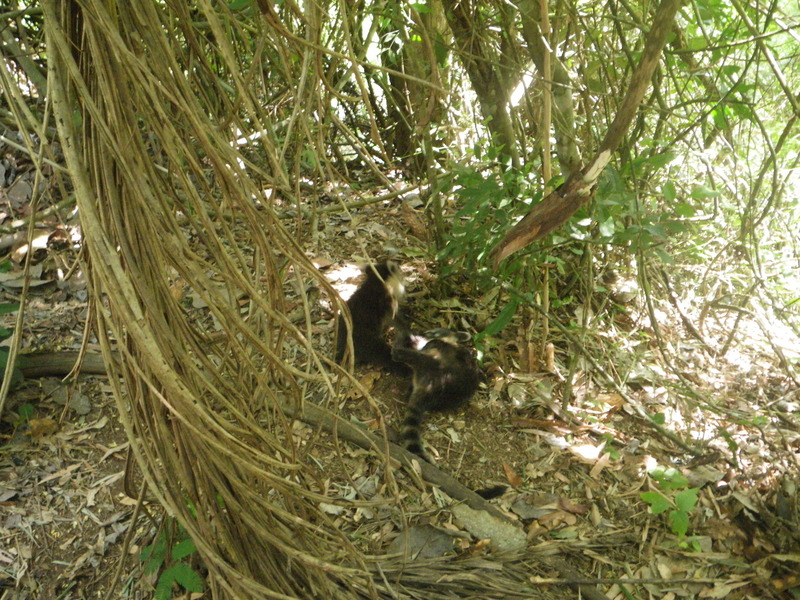

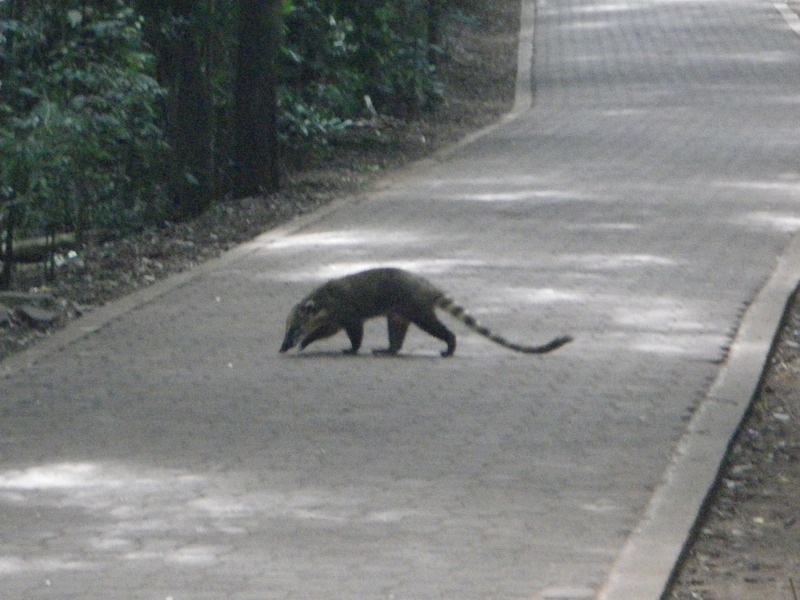
The capuchin monkeys are also quite entertaining, and also known for trying to steal food from visitors. They are small, perhaps 40cm long (plus tail), and generally unafraid. Unlike the coati, they move fast and are very good at climbing trees and other structures.
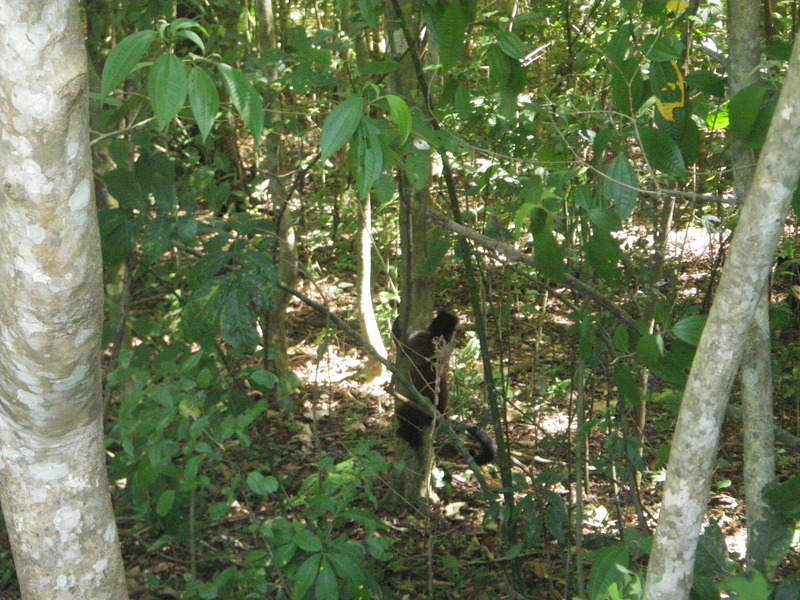
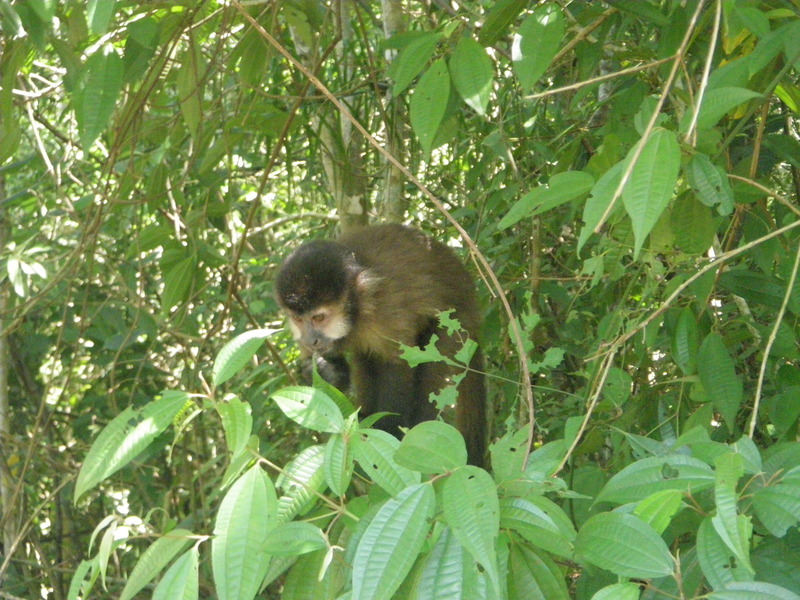
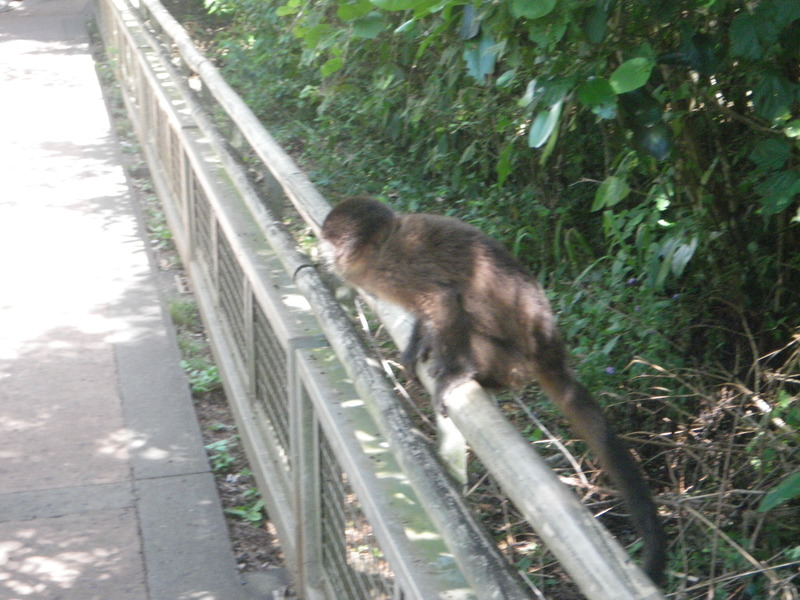
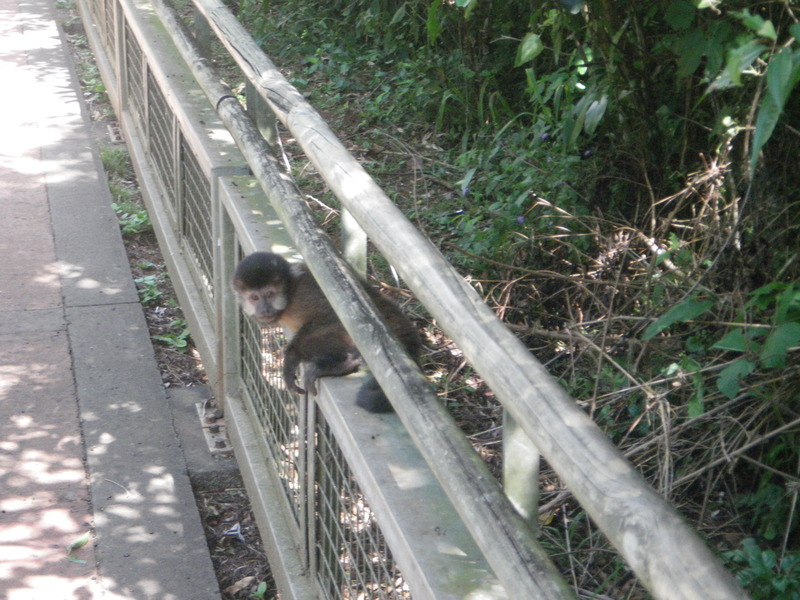
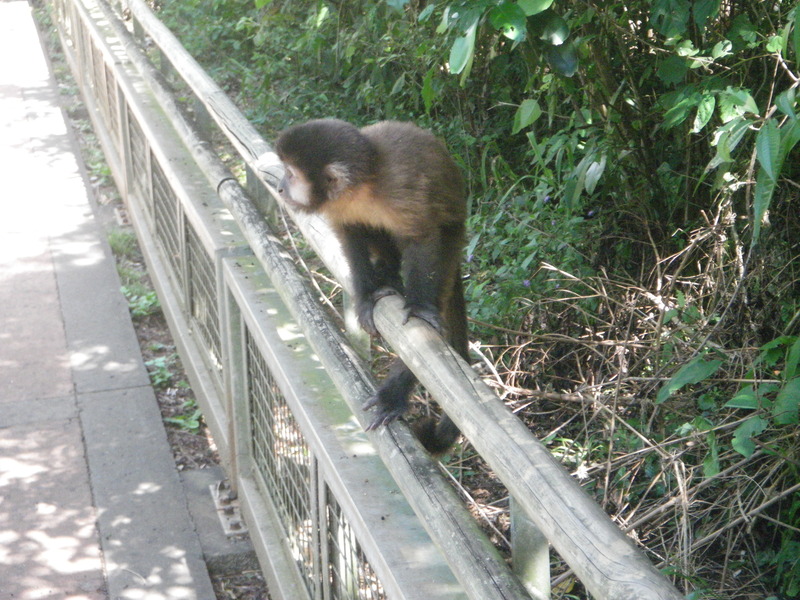
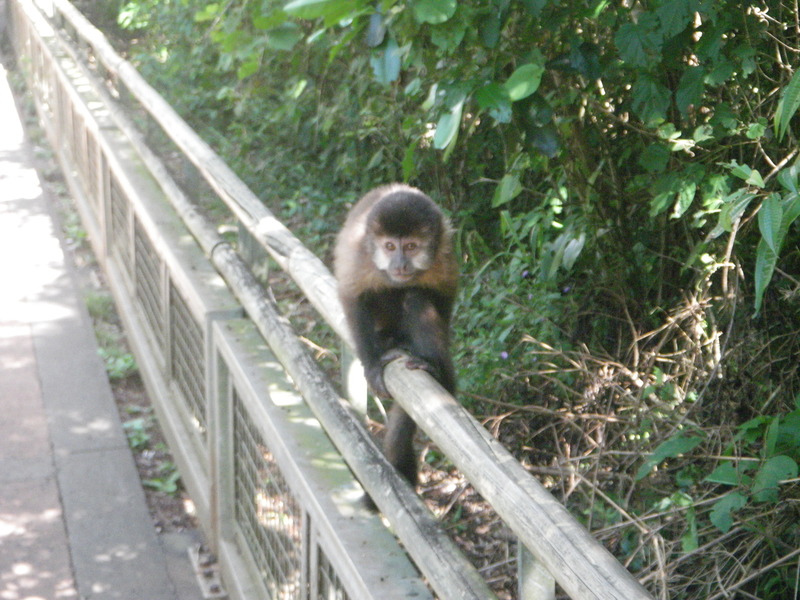
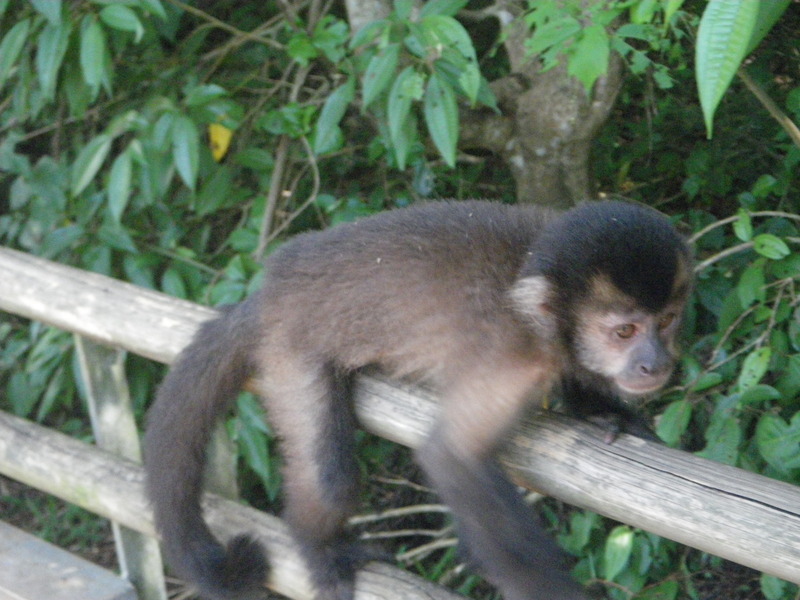

I saw quite a few more animals, including some waterbirds, lizards, and large (perhaps 50cm long) catfish.
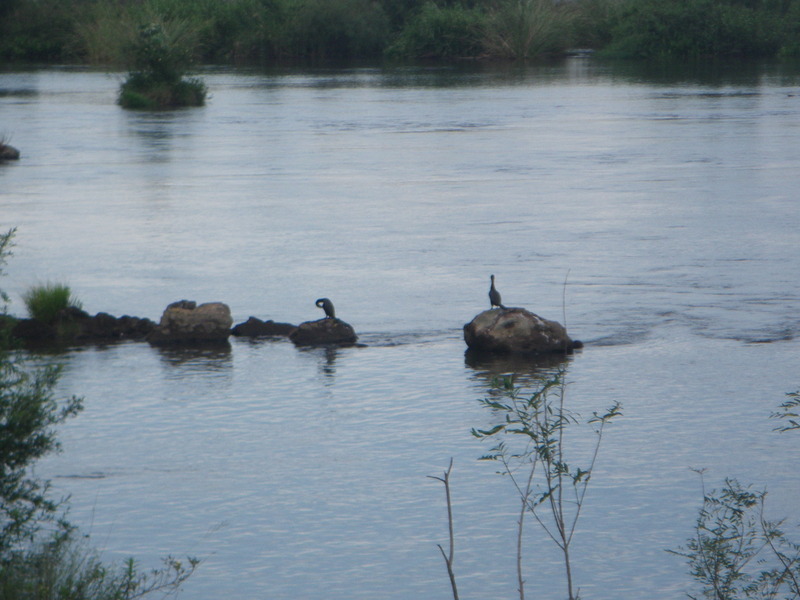
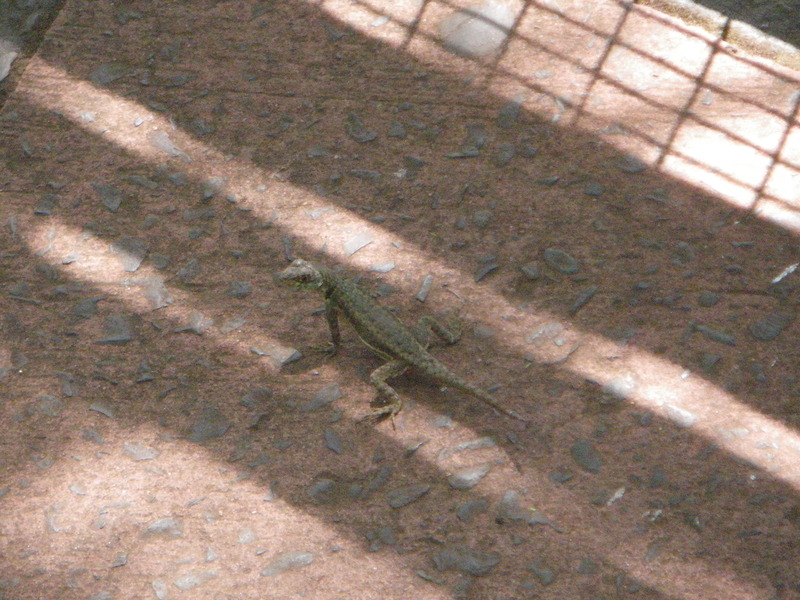
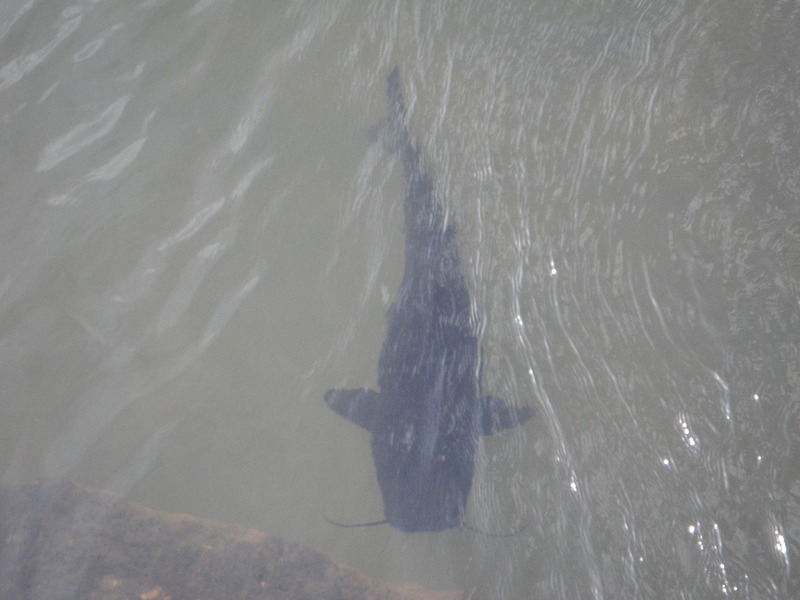
Butterflies also were very common in the park. They seem generally unafraid, and some of them landed on my hand. After a while, I realized they were licking the salt from my skin.


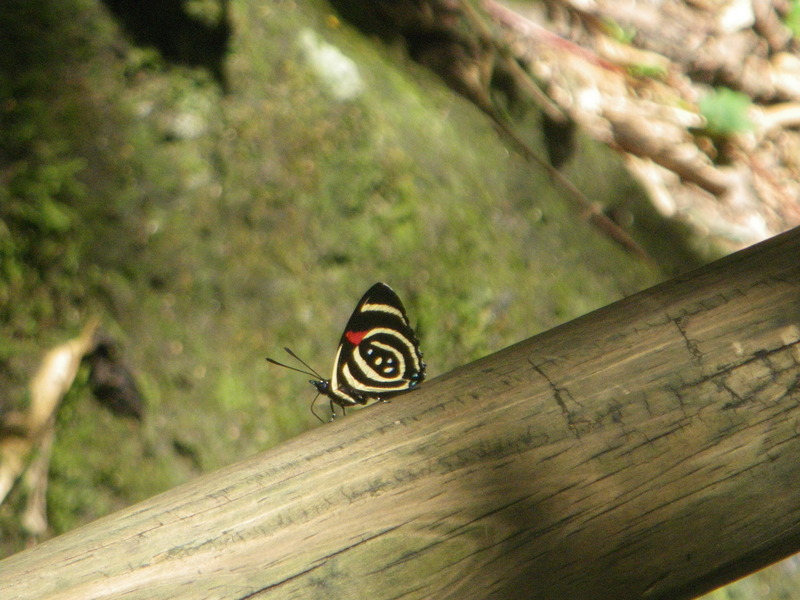
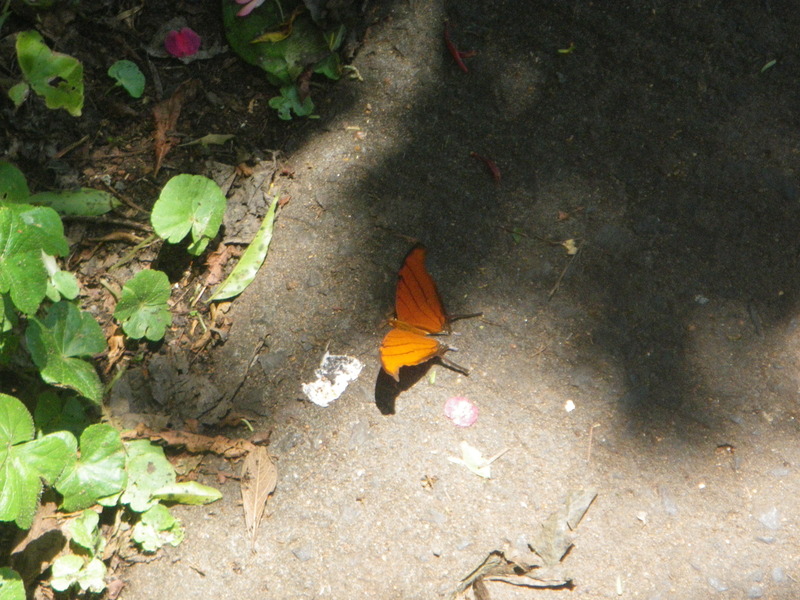
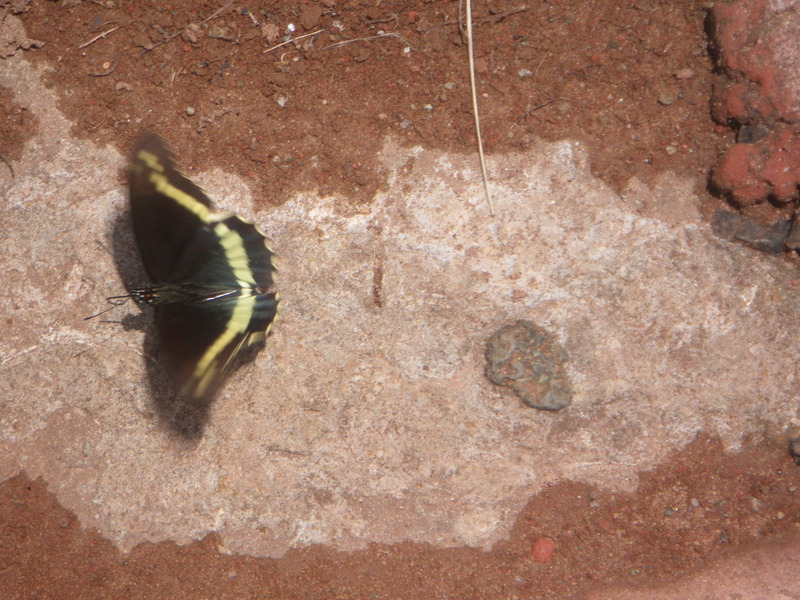
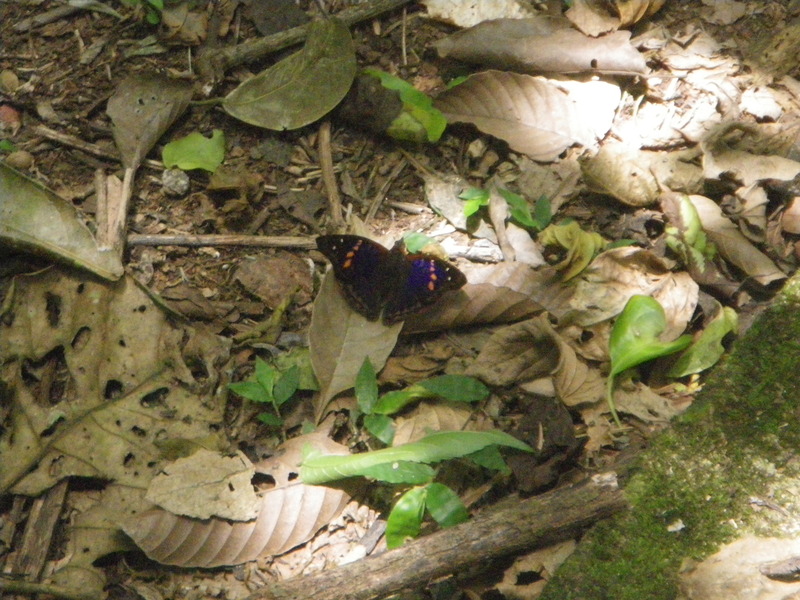
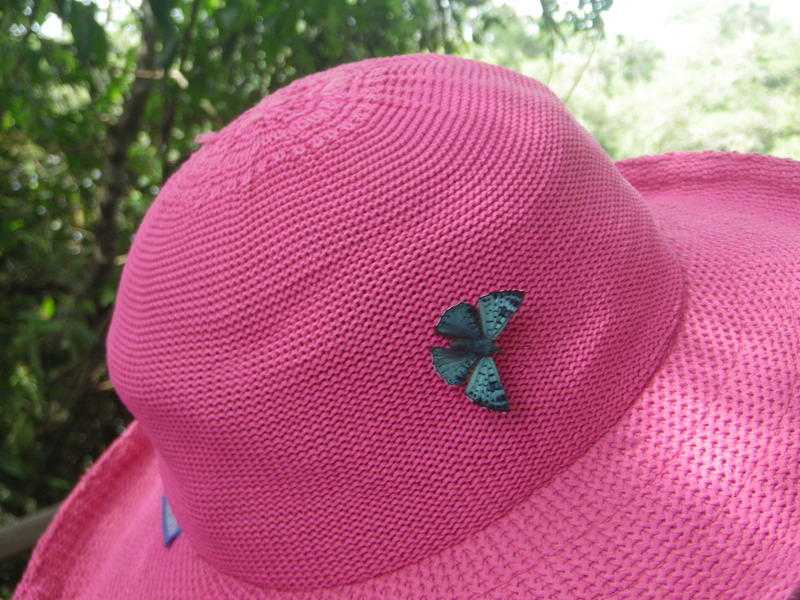
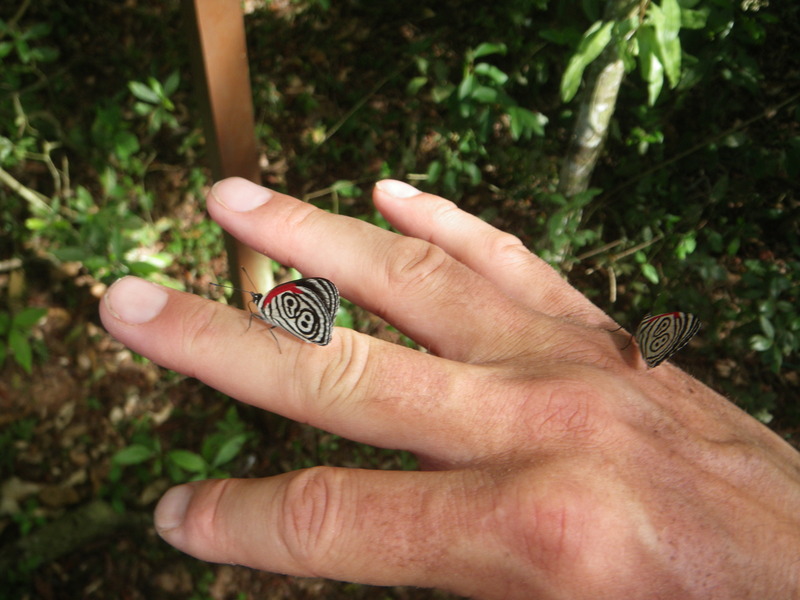
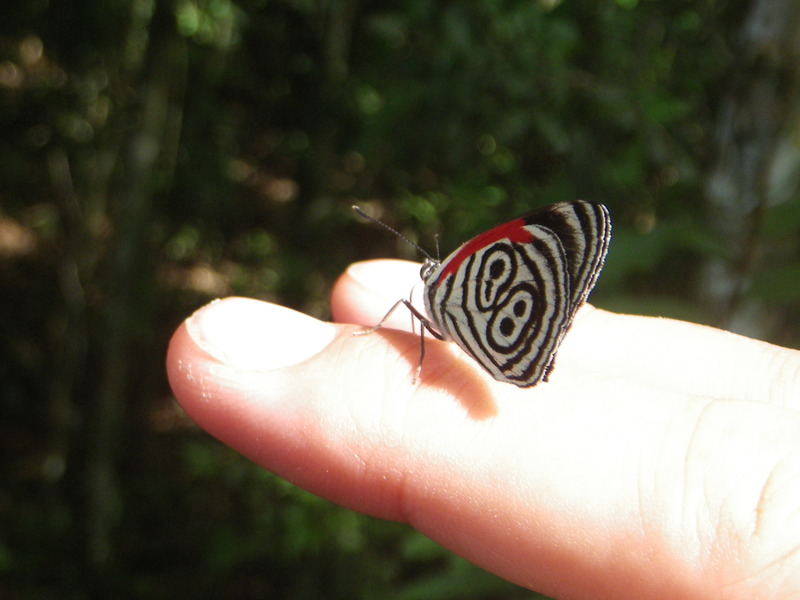
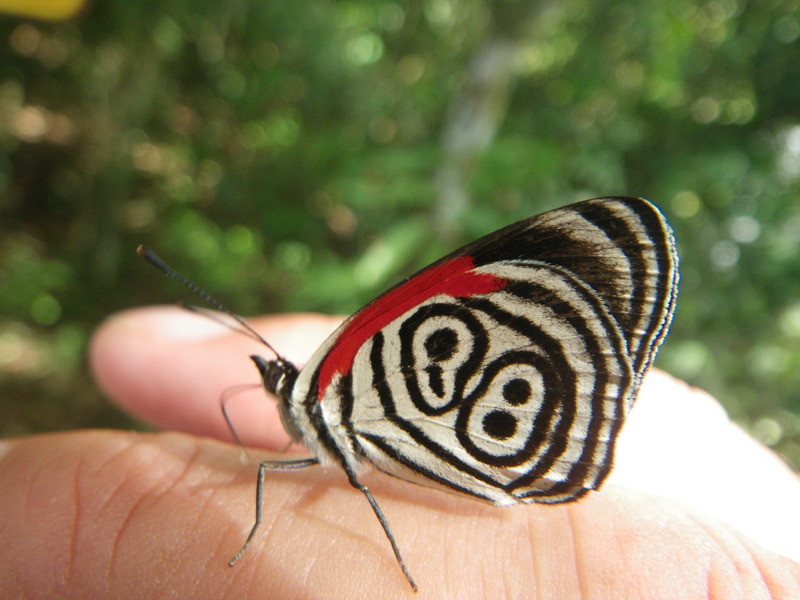
At one point, I was watching a lizard, and I had to be careful not to step on it, because it was unafraid of me. And then I saw a butterfly that also did not seem afraid of me. As I was trying to take a picture of the butterfly, the lizard moved faster than I could follow, and all of a sudden, the butterfly and the lizard were one!! It was interesting to see nature in action.


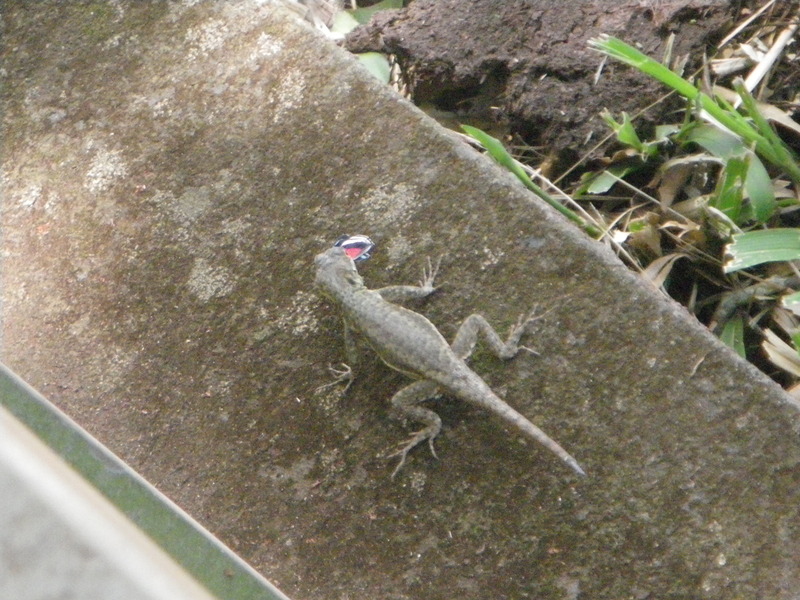
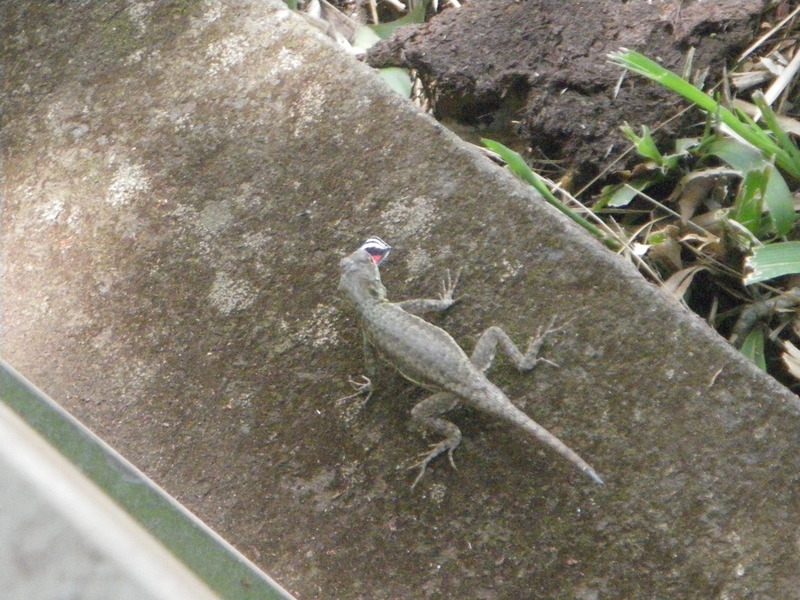

The variety and abundance of butterflies was matched by the abundance and variety of flowers.
